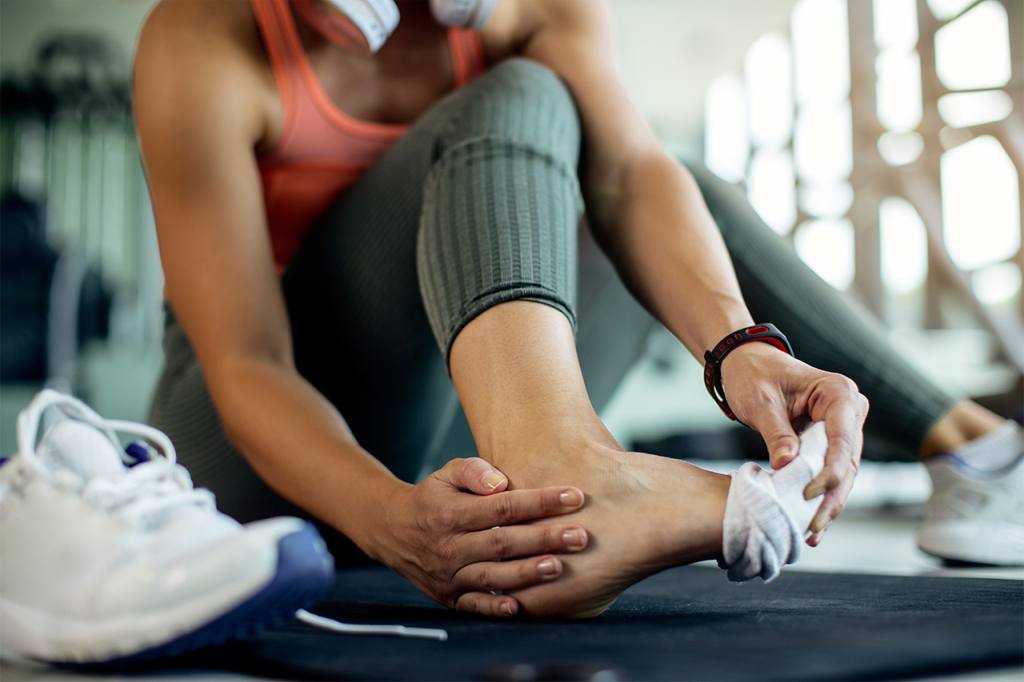Working out is a cornerstone of a healthy lifestyle, offering numerous physical and mental benefits. However, it’s not without risks. Common workout injuries can derail progress and cause significant pain and frustration. Fortunately, many of these injuries are preventable with the right approach and knowledge. In this blog post, we will explore practical tips and strategies to help you avoid common workout injuries, ensuring that you stay on track with your fitness goals.
Understanding Common Workout Injuries
Before diving into prevention tips, it’s essential to understand the types of injuries that frequently occur during workouts. Some of the most common include:
- Sprains and Strains: These involve overstretching or tearing ligaments (sprains) or muscles and tendons (strains).
- Tendinitis: Inflammation of the tendons, often due to overuse.
- Runner’s Knee: Pain around the kneecap, commonly affecting runners.
- Shin Splints: Pain along the shin bone, usually from running on hard surfaces or wearing improper footwear.
- Lower Back Pain: Often resulting from poor form, especially during weightlifting exercises like deadlifts and squats.

Tips to Prevent Workout Injuries
- Warm-Up Properly
A proper warm-up prepares your body for the physical demands of exercise by increasing blood flow to muscles, raising your heart rate, and improving joint mobility. A good warm-up should last at least 5-10 minutes and include dynamic stretches and low-intensity activities related to your workout. For example, if you’re going to run, start with a brisk walk and then transition to a light jog.
- Focus on Technique
Proper technique is crucial in preventing injuries. Poor form can place undue stress on joints and muscles, leading to strains, sprains, and other injuries. Consider working with a certified trainer to learn the correct form for various exercises. They can provide guidance and adjustments to ensure you’re performing movements safely and effectively.
- Use Appropriate Equipment
Using the right equipment can significantly reduce your risk of injury. This includes wearing supportive footwear, using weights that are appropriate for your strength level, and utilizing mats or padding when necessary. Ensure that your equipment is in good condition and properly adjusted to your body.
- Progress Gradually
One of the most common causes of workout injuries is doing too much too soon. Gradually increasing the intensity, duration, and frequency of your workouts allows your body to adapt and build strength without being overwhelmed. Follow the 10% rule: increase your workout intensity or duration by no more than 10% per week to prevent overuse injuries.
- Listen to Your Body
Your body sends signals when something is wrong. Ignoring pain or discomfort can lead to serious injuries. If you experience persistent pain, swelling, or weakness, it’s essential to rest and seek medical advice if necessary. Incorporate rest days into your workout routine to allow your body to recover and repair.
- Stay Hydrated
Hydration is critical for muscle function and overall performance. Dehydration can lead to muscle cramps, fatigue, and decreased coordination, increasing the risk of injury. Drink water before, during, and after your workouts to stay adequately hydrated.
- Cross-Train
Repeating the same exercises can lead to overuse injuries. Cross-training involves incorporating different types of workouts into your routine, which helps to balance muscle development and reduce repetitive strain. For example, mix strength training, cardio, and flexibility exercises to give your body a well-rounded workout.
- Cool Down and Stretch
A proper cool-down helps your body transition back to a resting state and reduces muscle soreness. Spend at least 5-10 minutes performing low-intensity exercises and static stretches after your workout. Stretching improves flexibility, enhances blood flow, and aids in muscle recovery.
- Maintain a Balanced Diet
A balanced diet provides the nutrients your body needs to perform and recover from workouts. Ensure you’re consuming enough protein for muscle repair, carbohydrates for energy, and healthy fats for overall health. Incorporate vitamins and minerals such as calcium and vitamin D, which are essential for bone health.
- Get Enough Sleep
Sleep is when your body repairs and rebuilds muscles. Lack of sleep can impair your performance, decrease coordination, and increase the risk of injury. Aim for 7-9 hours of quality sleep per night to support your fitness goals and overall health.
Real-Life Examples and Stories
To illustrate the importance of these tips, let’s look at some real-life examples. Professional athletes often face rigorous training schedules, but those who prioritize injury prevention techniques have longer, more successful careers. For instance, NBA star LeBron James invests heavily in his body, incorporating everything from specialized training regimens to recovery protocols, which has helped him maintain peak performance and avoid significant injuries throughout his career.
Another example is recreational runners who participate in marathons. Many follow structured training plans that emphasize gradual progression, proper footwear, and cross-training. These runners often report fewer injuries and better performance compared to those who train haphazardly.
Conclusion
Preventing workout injuries requires a combination of knowledge, preparation, and attentiveness to your body’s needs. By incorporating proper warm-ups, focusing on technique, using the right equipment, progressing gradually, and listening to your body, you can significantly reduce your risk of injury. Remember, the goal is not only to stay active but to stay active safely and sustainably. Implement these tips into your fitness routine and enjoy the benefits of a healthy, injury-free lifestyle.



